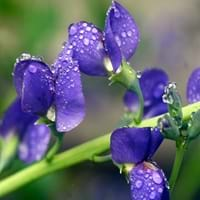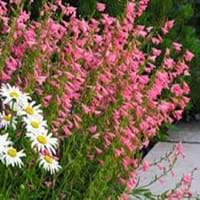Life Span
Perennial
Perennial
Type
Shrub
Flowering Plants
Origin
North America, United States, North-Central United States, Central United States, Canada
Southwestern United States, Mexico
Types
Blue False Indigo
White False Indigo
Not Available
Number of Varieties
Not Available
Habitat
gardens, Grassland, Warmer regions
Alpine Meadows, moist forests, Open areas
USDA Hardiness Zone
2-8
4-9
Sunset Zone
A1, A2, A3, 1a, 1b, 2a, 2b, 3a, 3b, 4, 5, 6, 7, 8, 9
1a, 1b, 2a, 2b, 3a, 3b, 4, 5, 6, 7, 8, 9, 10, 11, 12, 13, 14, 15, 16, 17, 18, 19, 20
Habit
Oval or Rounded
Upright/Erect
Flower Color Modifier
Not Available
Bicolor
Fruit Color
Light Green
Brown
Leaf Color in Spring
Light Green, Gray Green, Gray
Green
Leaf Color in Summer
Light Green, Gray Green, Gray
Green
Leaf Color in Fall
Light Green, Gray Green, Gray
Green
Leaf Color in Winter
Not Available
Green
Leaf Shape
Ovate
Long Linear
Plant Season
Summer, Fall
Spring, Summer
Sunlight
Full Sun, Partial Sun, Partial shade
Full Sun
Type of Soil
Loam, Sand
Loam, Sand
The pH of Soil
Neutral, Alkaline
Neutral, Alkaline
Soil Drainage
Well drained
Well drained
Bloom Time
Summer, Late Summer, Early Fall
Late Spring, Early Summer
Tolerances
Drought
Pollution
Where to Plant?
Ground, Pot
Ground
How to Plant?
Seedlings, Stem Planting
Layering, Root Division, Stem Cutting
Plant Maintenance
Medium
Medium
Watering Requirements
Average Water Needs
Average Water Needs, Never Over-water, Requires regular watering
In Summer
Lots of watering
Lots of watering
In Spring
Moderate
Moderate
In Winter
Average Water
Average Water
Soil pH
Neutral, Alkaline
Neutral, Alkaline
Soil Type
Loam, Sand
Loam, Sand
Soil Drainage Capacity
Well drained
Well drained
Sun Exposure
Full Sun, Partial Sun, Partial shade
Full Sun
Pruning
Remove damaged leaves, Remove dead branches, Remove dead leaves
cut main flower spike, Remove damaged leaves, Remove dead branches, Remove dead leaves, remove old stems before spring
Fertilizers
All-Purpose Liquid Fertilizer
All-Purpose Liquid Fertilizer
Pests and Diseases
Red blotch
chrysanthemum eelworms, Slugs, Snails
Plant Tolerance
Drought
Drought
Flower Petal Number
Single
Single
Fragrant Bark/Stem
Yes
No
Foliage Texture
Fine
Medium
Foliage Sheen
Matte
Glossy
Self-Sowing
Not Available
Yes
Attracts
Not Available
Hummingbirds, Butterflies
Allergy
Not Available
Unknown
Aesthetic Uses
Showy Purposes
Beautification, Cottage Garden, Landscape Designing, Ornamental use, Water gardening
Beauty Benefits
Not Available
Not Available
Environmental Uses
Air purification
Air purification, Food for insects, Prevent Soil Erosion
Medicinal Uses
Not Available
No Medicinal Use
Part of Plant Used
Whole plant
Not Applicable
Other Uses
Used as Ornamental plant
Beneficial species for attracting pollinators, deer resistant
Used As Indoor Plant
No
No
Used As Outdoor Plant
Yes
Yes
Garden Design
Foundation, Mixed Border, Rock Garden, Wall
Container, Cutflower, Mixed Border, Rock Garden / Wall, Wildflower
Botanical Name
AMORPHA canescens
PENSTEMON barbatus 'Elfin Pink'
Common Name
False Indigo
Beardlip Penstemon, Elfin Pink Penstemon
In Hindi
इंडिगो
Elfin Pink Penstemon
In German
falsches Indigo
Elfin Pink Penstemon
In French
faux Indigo
Elfin Pink Penstemon
In Spanish
Falso Indigo
Elfin Pink Penstemon
In Greek
Λάθος Indigo
Elfin Pink Penstemon
In Portuguese
false Indigo
Elfin Penstemon -de-rosa
In Polish
fałsz Indigo
Elfin Różowy Penstemon
In Latin
falsum indicum
Elfin Pink Penstemon
Phylum
Magnoliophyta
Angiosperms
Class
Not Available
Magnoliopsida
Family
Fabaceae
Scrophulariaceae
Clade
Angiosperms, Eudicots, Rosids
Asterids, Eudicots
Tribe
Not Available
Not Available
Subfamily
Not Available
Not Available
Number of Species
Not Available
Season and Care of False Indigo and Elfin Pink Penstemon
Season and care of False Indigo and Elfin Pink Penstemon is important to know. While considering everything about False Indigo and Elfin Pink Penstemon Care, growing season is an essential factor. False Indigo season is Summer and Fall and Elfin Pink Penstemon season is Summer and Fall. The type of soil for False Indigo is Loam, Sand and for Elfin Pink Penstemon is Loam, Sand while the PH of soil for False Indigo is Neutral, Alkaline and for Elfin Pink Penstemon is Neutral, Alkaline.
False Indigo and Elfin Pink Penstemon Physical Information
False Indigo and Elfin Pink Penstemon physical information is very important for comparison. False Indigo height is 60.00 cm and width 120.00 cm whereas Elfin Pink Penstemon height is 25.40 cm and width 20.30 cm. The color specification of False Indigo and Elfin Pink Penstemon are as follows:
False Indigo flower color: Purple
False Indigo leaf color: Light Green, Gray Green and Gray
Elfin Pink Penstemon flower color: Pink
- Elfin Pink Penstemon leaf color: Green
Care of False Indigo and Elfin Pink Penstemon
Care of False Indigo and Elfin Pink Penstemon include pruning, fertilizers, watering etc. False Indigo pruning is done Remove damaged leaves, Remove dead branches and Remove dead leaves and Elfin Pink Penstemon pruning is done cut main flower spike, Remove damaged leaves, Remove dead branches, Remove dead leaves and remove old stems before spring. In summer False Indigo needs Lots of watering and in winter, it needs Average Water. Whereas, in summer Elfin Pink Penstemon needs Lots of watering and in winter, it needs Average Water.





